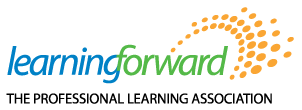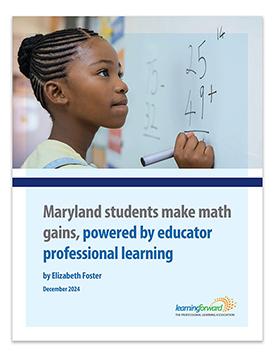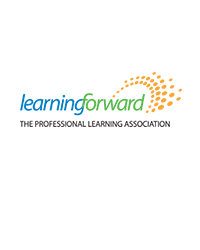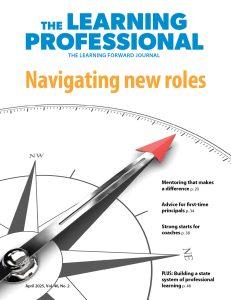Student math scores in a set of Maryland classrooms have significantly improved, thanks to a transformative approach to educator professional learning, according to a new report released by Learning Forward during its national conference. Learning Forward is the nation’s leading organization dedicated to advancing professional learning for educators.
Results Offer Opportunities for Expanding Professional Learning Across Maryland Schools
In a seed program in Montgomery County, students are reaping the benefits of a small team of educators collaborating to refine their approach to the district’s math curriculum. The results are striking—students in participating classrooms increased their proficiency scores on district tests from an average of 9% to 52% in just one marking period. Through professional learning focused on innovative instructional strategies and engaging in collaborative planning, these teachers are enhancing student engagement and achieving dramatic improvements in academic performance.
Teacher Jared Thomas’ Math 6 classroom at Gaithersburg Middle School buzzes with the sound of students discussing math—a scene that was once rare but one that has become a daily occurrence. Students work in groups, explore math vocabulary, debate problem-solving strategies and engage deeply with the material. This shift in classroom dynamics is part of a broader change that is leading to increases in student math proficiency.
“The need to address how we implement instructional materials is critically important in the educational ecosystem,” said Frederick Brown, president and chief executive officer of Learning Forward. “Implementing new mathematics instructional models with integrity at a high level is a challenge now faced by scores of districts adopting high-quality curriculum. Educator professional learning embedded in the curriculum helps us meet our teachers where they are so that we can best position them to meet the needs of the children they support.”
This shift not only is evident in Thomas’ classroom but across the school, where students are showing marked improvements in math performance. For instance, the school’s Hispanic students already were approaching the year-end proficiency goal by mid-year.
Such improvements are indicative of the power of targeted professional learning. The team of teachers involved in this Learning Forward Network have benefited from structured collaboration during professional learning communities (PLCs), where they meet regularly to dig into the curriculum from the perspective of students, discuss challenges, share data and learn from one another. These PLCs have helped teachers become more confident in using the new math curriculum, and more adept at tailoring their instruction to meet students’ diverse needs.
“Our professional learning community adapted our planning time and tools, such as our calendar, based on what we learned improves student outcomes,” said Thomas.
“The intent of our teachers was to shift away from direct instruction and do a deep dive into best practices for allowing students to lead their own learning. At the same time, we are finding ways to additionally support our special education and English Language Learner students.”
The success at Gaithersburg Middle School is part of a larger trend in Maryland where recently the State Department of Education adopted Learning Forward’s Standards for Professional Learning and, separately, awarded Learning Forward its $1.9 million System of Professional Learning Grant to develop a new professional learning system tied to teachers’ career ladder. The project involves aligning Maryland’s system-wide professional learning.
This framework, which ensures teachers’ professional learning time is well spent and leads to better outcomes for students, is the backbone of the initiative in Montgomery County and of other learning networks throughout the country. In addition, the Maryland State Department of Education has been quick to translate into practice the recently adopted standards using Learning Forward’s guidance and implementation tools.
“Professional learning that is high-quality and focused on the materials teachers use in the classroom every day ensures that students benefit from the investments in curricula and instructional materials,” said Elizabeth Foster, the author of the report and senior vice president of research and strategy for Learning Forward.
“Teachers become more skilled and confident in their teaching when the professional learning is closely tied to the materials they are using in the classroom every day,” Foster said. “Teachers need time to engage with the curriculum and practice strategies that apply directly to their classroom and their students,” she said.
“The example of Montgomery County shows the progress that is possible when educators come together in cycles of improvement focused on implementing their curriculum through instruction,” Foster said. “The other teams in the Curriculum-Based Professional Learning Network are seeing great educator and student outcomes as well, and we look forward to highlighting their work in the future.”
As more Maryland schools adopt the Standards for Professional Learning and engage in collaborative, curriculum-focused professional learning, the potential for further improvement is immense. “Students across the state are set to benefit from this sustained investment in high-quality teacher professional learning, paving the way for long-term success in math education,” said Brown. “Professional learning that is based on proven standards and moves beyond outdated, passive training isn’t just an investment in educators—it’s an investment in students.”










